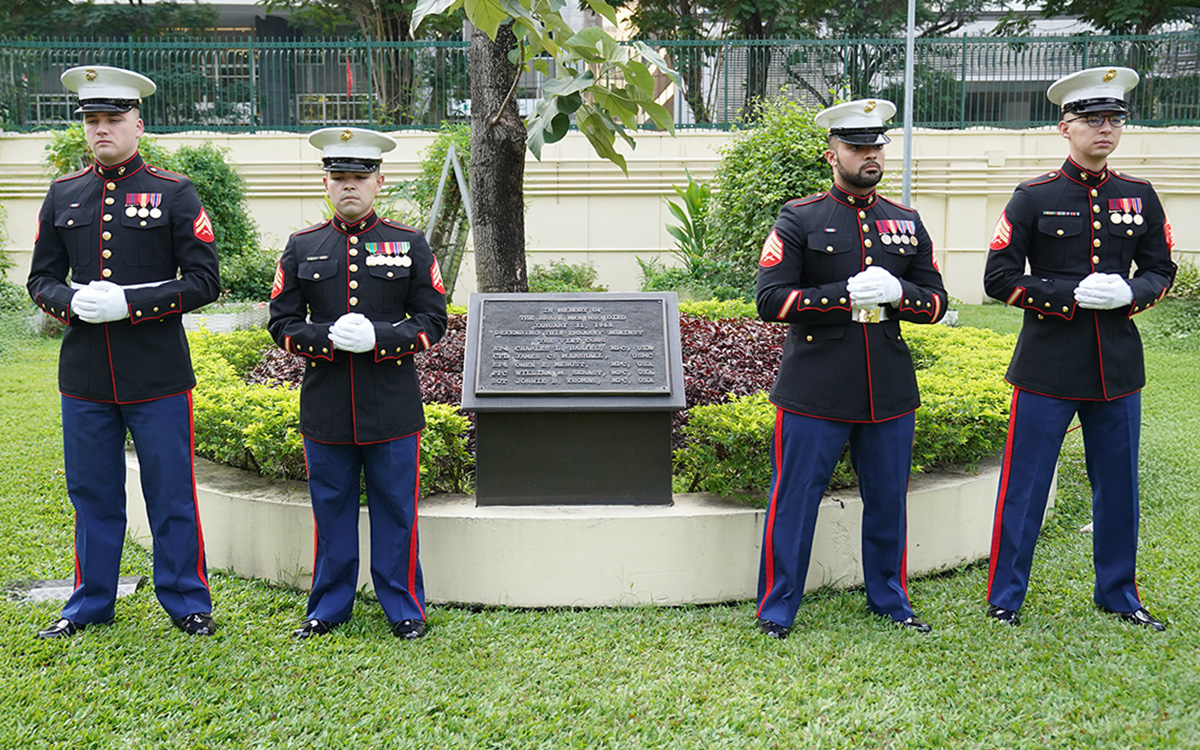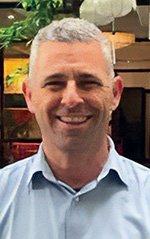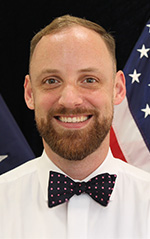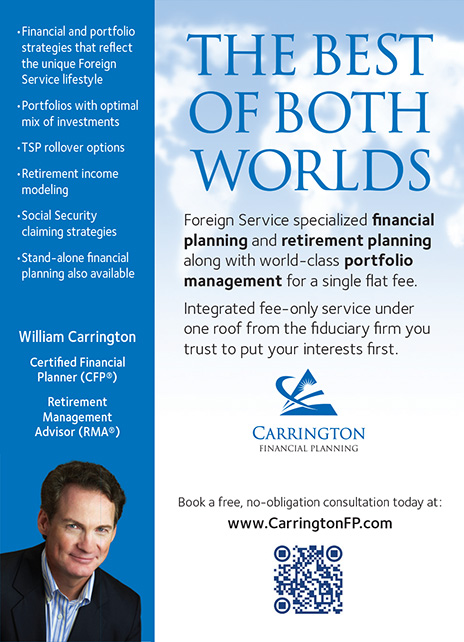Through the Visa Window: Those Who Leave, Those We Left, Those Who Stay
The faces on both sides of the visa window in Ho Chi Minh City Consulate General reflect a complex history of war, partnership, and the American Dream.
BY GREG NAARDEN AND CHARLES HELMS

U.S. Marines at plaque honoring members of the military who died defending the embassy in 1968.
U.S. Consulate Ho Chi Minh City
Ho Chi Minh City ’s (HCMC) Immigrant Visa (IV) Unit is a gold mine for amateur historians. Amid the mounds of documents and notes from daily interviews lies a microcosm of our relationship with Vietnam.
The basic facts and figures show an extraordinary trajectory of population flows. Fifty years ago, the fall of South Vietnam started a massive outflow of refugees to the United States. Forty-five years ago, the United States established a main office in Bangkok as part of the orderly departure program (ODP) to support the continued flow of Vietnamese, and 25 years ago, that office was closed as the HCMC Consulate General opened.
Since opening in 1999, HCMC’s IV Unit has supported the lawful immigration of hundreds of thousands of Vietnamese to the United States, and today, it is one of the five largest and busiest in the world, interviewing more than 30,000 people annually. U.S. census data indicates that with the continued flow of Vietnamese people, they are now the sixth-largest immigrant population in the United States.
Perceptions of America
Over 50 years, the nature of Vietnamese immigration has changed significantly. While those who left in the 1970s and 1980s did so generally as refugees, those who seek IVs today are largely hoping to reunite with family members. There are a few important recurring themes in our IV interviews.
Applicants from rural communities near Ho Chi Minh City or Da Nang in central Vietnam certainly view the United States as a place of opportunity, and they are pursuing immigration as a way to break out of difficult economic circumstances. With few opportunities for higher education or careers beyond unskilled labor, these applicants have spent years preparing for a move to the United States and, through networks of contacts in the diaspora, have plans to establish themselves through a job in a family-run business. Anecdotally, the notion of the United States as a land of possibilities is not limited by socioeconomic status.
Regardless of where they come from, many IV applicants are motivated by the idea of giving their children greater opportunities. A lot of this comes out in discussions about education; Vietnamese have placed a premium on English language instruction (there is a nationwide belief in the importance of speaking English proficiently), and many see a U.S. education as a ticket to a brighter future for their children.
Regardless of where they come from, many IV applicants are motivated by the idea of giving their children greater opportunities.
The stories that applicants tell, and their motivations for immigrating to the U.S., are also reflections of a kind of pragmatism that is a noticeable characteristic of today’s Vietnam. The United States is very popular in Vietnam—overwhelmingly so in public opinion polls—and Vietnamese people focus on the United States as a rich country full of opportunity, not as a former adversary. Very few people mention the war, and a majority of the population was born well after 1975. Landmarks from the fall of Saigon are visited mainly by tourists, and the site of the famous 1975 photograph of evacuees boarding a helicopter is atop a nondescript office building that is easy to miss.
But the IV applicant pool also tells us a lot about our own country. The Vietnamese diaspora in the United States has grown to an estimated 1.5 to 2 million over the last 50 years, and the core of that diaspora comes from the south—those who were allied with the United States, who lived in Central or South Vietnam, and mainly arrived in California or Texas in the 1970s or 1980s. Increasingly, though, destinations of Vietnamese IV applicants go well beyond the west and southwest—from Bauxite, Arkansas, to Raleigh, North Carolina. Knowing how new Vietnamese immigrants start out in the United States gives greater context to and appreciation for those who have become well known, such as former U.S. Representative Stephanie Murphy, who was born in HCMC, or Dat Nguyen, who was born in a refugee center in Arkansas and played middle linebacker for the Dallas Cowboys.
The lure of opportunity, a focus on the future, and a diaspora that contributes to the fabric of the United States are not unique concepts to Vietnam. But in the context of the last half century, the fact that Vietnam is among the largest sources of IVs—along with Mexico, the Dominican Republic, Philippines, and China—is noteworthy.
Human Faces of the Legacy of War
While most IV applicants today are the beneficiaries of relatives who left the south and established lives in communities throughout the United States, some IV applicants never met their fathers and can neither ignore nor escape the legacy of the war. They are known as Amerasians, the children of U.S. servicemen, officials, and contractors who were left here when the United States departed in 1975. HCMC’s Amerasian IV applicant pool is unique: As public attention turned to maltreatment of these children in the years after the war, Congress created a special immigrant visa class for these individuals through the Amerasian Homecoming Act. Over the years, more than 70,000 Amerasians and their family members have immigrated to the United States to start new lives.
There are many tragic elements of this story. Particularly in the immediate aftermath of the war, Amerasians were completely marginalized in Vietnam as children of “enemy” Americans born during the war and denied education and employment opportunities, social support, government benefits, even identity cards. As a result, many lived as outcasts, some eking out a living in remote rural environments or taking to the streets of major cities. The majority of recent applicants were raised by adoptive families, abandoned by mothers who feared reprisals by the Vietnamese government against those viewed as having collaborated with American forces during the war. Most have distinct features that make them readily identifiable. Few could name their fathers, and fewer still have ever met them. In the best of cases, birth mothers or other relatives managed to preserve a photo or two.
This special IV category has given Amerasians a shot at a new life, but proving parentage has often been difficult. Particularly for applicants raised by adoptive parents, evidence was hard to come by. This problem was exacerbated by rampant fraud and attempts to exploit these applicants in the 1980s and 1990s along with a tendency by caretakers to tell orphans of uncertain parentage that they might be Amerasian—a form of hopeful storytelling, even if there was no reason to believe such claims.
While our applicant pool tells us much about the history of the U.S.-Vietnam relationship, we work with people who experienced that history firsthand.
As the years have passed, applicants with the strongest and easiest claims to prove have already been issued visas. Only those with complicated or unclear cases remain, and for several years, visa issuances ground to a near-halt. Resourceful consular officers engaged with nongovernmental organizations to create a process utilizing commercial DNA evidence, and this allowed for a minor resurgence in the visa class and a path forward for applicants who had been trying to prove their claims of American parentage for decades.
The number of Amerasian cases is dwindling, as this population ages into their 50s and 60s, remaining cases are cleared, and some of those eligible choose to remain in Vietnam.
Witnesses to History
Every consular officer must acknowledge that locally employed (LE) staff are the backbone of our operations; that is most assuredly true in HCMC’s consular section. But it is truly amazing to work side by side with people who have experienced the full breadth of the U.S.-Vietnam relationship over the last 50 years.
Pictures of former Embassy Saigon from April 1975 are particularly poignant. Today, IV applicants enter the same compound portrayed in those old pictures, though the former embassy chancery building was torn down long ago and the current prefab-style building was erected as a stand-in until a more permanent structure could be built. They line up patiently as they await their turn at the IV windows. Today’s morning bustle of applicants is a striking contrast to the images from 50 years ago, when throngs of people scaled the same walls trying to escape Vietnam.
While our applicant pool tells us much about the history of the U.S.-Vietnam relationship, we work with people who experienced that history firsthand. Several of our Vietnamese colleagues have been with us from the beginning, when the consulate building was dedicated in 1999. Some even worked for the ODP, before the U.S. established a relationship with the Socialist Republic of Vietnam. While many of their colleagues have moved to the United States on SIVs, they have stayed, spending almost three decades in the service of the United States, and standing as living testaments to the human efforts of rebuilding a relationship.
Several of our current local staff members who lived through the war in Saigon were among the very first people hired to staff the consulate general in Ho Chi Minh City in the late 1990s. While much of the history of the U.S.-Vietnam relationship has been told through the eyes of ambassadors, historians, and politicians, the perspectives of our colleagues are fascinating and compelling. Yet our long-serving LE staff members do not dwell on the past. They choose to focus on the present and the future because they take a pragmatic approach to life: Working at the consulate is professionally enriching, and they are well respected in their communities. Some have even said that their friends respect them more because they work for the U.S. government in HCMC.
Our colleagues have had plenty of opportunities to move on, but they have chosen to serve alongside generations of FSOs who are focusing on the most recent 30 years, while being mindful of the last 50.
 §
§
IV work in HCMC brings a range of conflicting emotions: satisfaction that Vietnamese still carry the torch of the American Dream; sadness about Amerasians who have had a lifetime of hardships; appreciation for Vietnamese partners who have stood with us and who saw a future beyond the war; and ultimately, optimism about the human ties that bind the United States and Vietnam.
When sharing or linking to FSJ articles online, which we welcome and encourage, please be sure to cite the magazine (The Foreign Service Journal) and the month and year of publication. Please check the permissions page for further details.
Read More...
- “Finding My Heroes, Finding Myself: From Refugee Child to State Department Official” by Anne D. Pham, The Foreign Service Journal, April 2015
- “Mobilizing for South Vietnam’s Last Days” by Parker W. Borg, The Foreign Service Journal, April 2015
- “Afghanistan, Iraq, Vietnam: How the U.S. Has Resettled Its Wartime Allies” by James McBride, Council on Foreign Relations, September 2021





